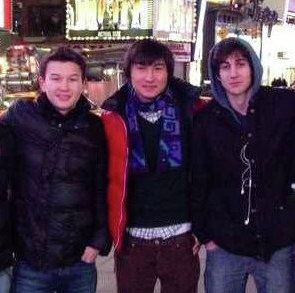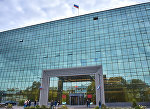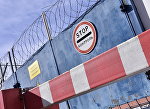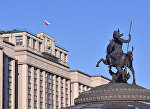MOSCOW, January 15 (RAPSI, Ingrid Burke) – Trial is set to begin on June 23 in the cases of Boston Marathon bombing suspect Dzhokhar Tsarnaev’s college buddies Dias Kadyrbayev, Azamat Tazhayakov, and Robel Kidane Phillipos.
A note filed Wednesday and appended to the case docket sets out a series of dates and deadlines of import to the case.
Kadyrbayev and Tazhayakov are described in the indictment as nationals of Kazakhstan that arrived in the US on student visas sometime around September 2011. They both face charges of obstruction of justice and conspiracy to obstruct justice.
Phillipos is a US citizen, local to the Boston area. He faces two counts of making false statements to the FBI in a terrorism investigation.
According to a statement released by US Attorney for Massachusetts Carmen Ortiz in August, Kadyrbayev and Tazhayakov face up to 20 years in prison for obstruction of justice, and up to five years for conspiracy, while Phillipos faces up to eight years in prison for each false-statement count. All of them face up to three years of supervised release and a fine of $250,000 on each charge, and Kadyrbayev and Tazhayakov may be deported following their prosecution.
Kadyrbayev, Tazhayakov, Phillipos, and Tsarnaev all began attending the University of Massachusetts at Dartmouth together in 2011. “The four men were friends, spent time together socializing, and often exchanged text messages with each other,” according to the indictment.
At about 2:49pm on April 15, two explosions occurred near the finish line of the Boston Marathon. IEDs devised from pressure cookers, low explosive powder, shrapnel, adhesive, and other materials were hidden in backpacks that were then placed near metal barricades in areas packed with hundreds of spectators, according to Tsarnaev’s indictment.
According to the Kadyrbayev / Tazhayakov indictment, “Each explosion killed at least one person, maimed, burned and wounded scores of others, and damaged public and private property, including the streets, sidewalk, barriers, and property owned by people and businesses in the locations where the explosions occurred.” Overall, three people were killed in the bombings and hundreds were injured.
The following four days were consumed by a dramatic and at times extremely violent manhunt for the suspects, who were identified by name on April 19 as Dzhokhar (then 19) and his brother Tamerlan Tsarnaev (26). The manhunt entailed the presence of thousands of law enforcement personnel from local, state, and federal agencies, and resulted in a veritable lockdown through parts of the greater Boston area.
Tamerlan was killed during a police shootout, and Dzhokhar was arrested on the evening of April 19 after having been discovered hiding in a dry-docked boat in the Boston suburb of Watertown.
The FBI searched the dorm room Dzhokhar had been living prior to the bombing on April 21. However, the Kadyrbayev / Tazhayakov indictment alleges that by that point, the room had already been picked through. According to the indictment, on the evening April 18, after the FBI had publicly posted images of the as-yet unidentified Tsarnaev brothers, Kadyrbayev, Tazhayakov, and Phillipos removed a number of items from Dzhokhar’s dorm room, including the bombing suspect’s laptop computer and a backpack containing fireworks.
Kadyrbayev then allegedly discarded the backpack in a dumpster outside of the apartment Kadyrbayev and Tazhayakov shared, and was later discovered by federal agents in a local landfill.
When it was found, the backpack allegedly contained fireworks, a jar of Vaseline, a thumb drive, and a homework assignment sheet.
Notably, Tsarnaev’s indictment claimed that at some point prior to the bombing, Dzhokhar had downloaded the first volume of Inspire magazine, described as an “English language online publication of al-Qaeda in the Arabian Peninsula.” The volume allegedly contained detailed instructions on the construction of IEDs using pressure cookers and explosive powder from fireworks, among other components.
The Kadyrbayev / Tazhayakov/Phillipos indictment asserts that Kadyrbayev received a text message from Dzhokhar that he showed to Tazhayakov on the evening of April 18 that stated: “If yu [sic] want yu [sic] can go to my room and take what’s there [smiley face] but ight [sic] bro [sic] Salam aleikum.”
While searching the dorm room, Kadyrbayev allegedly discovered the backpack containing fireworks, the containers of which “had been opened and manipulated. As a result, some of the explosive powder was visible.” Kadyrbayev then allegedly expressed his belief to Tazhayakov that a jar of Vaseline present in the room had been used by Dzhokhar “to make bombs.”
According to the indictment, Phillipos was interviewed by federal agents in the days following the bombings. He was asked questions about Dzhokhar, as well as in connection with the pending terrorism investigation. During these interviews, Phillipos allegedly concealed the fact that he, Kadyrbayev, and Tazhayakov had entered Tsarnaev’s dorm room and removed his backpack. “In so doing, he made numerous false and misleading statements to the agents,” according to the indictment.



